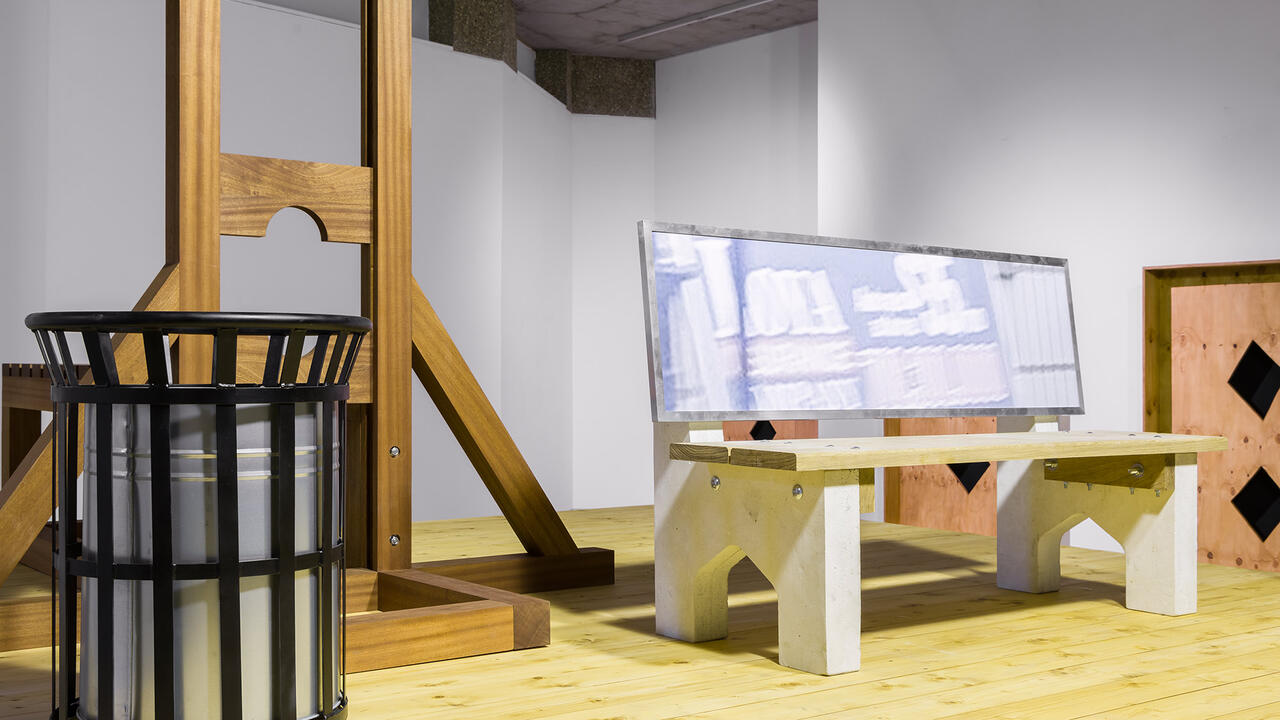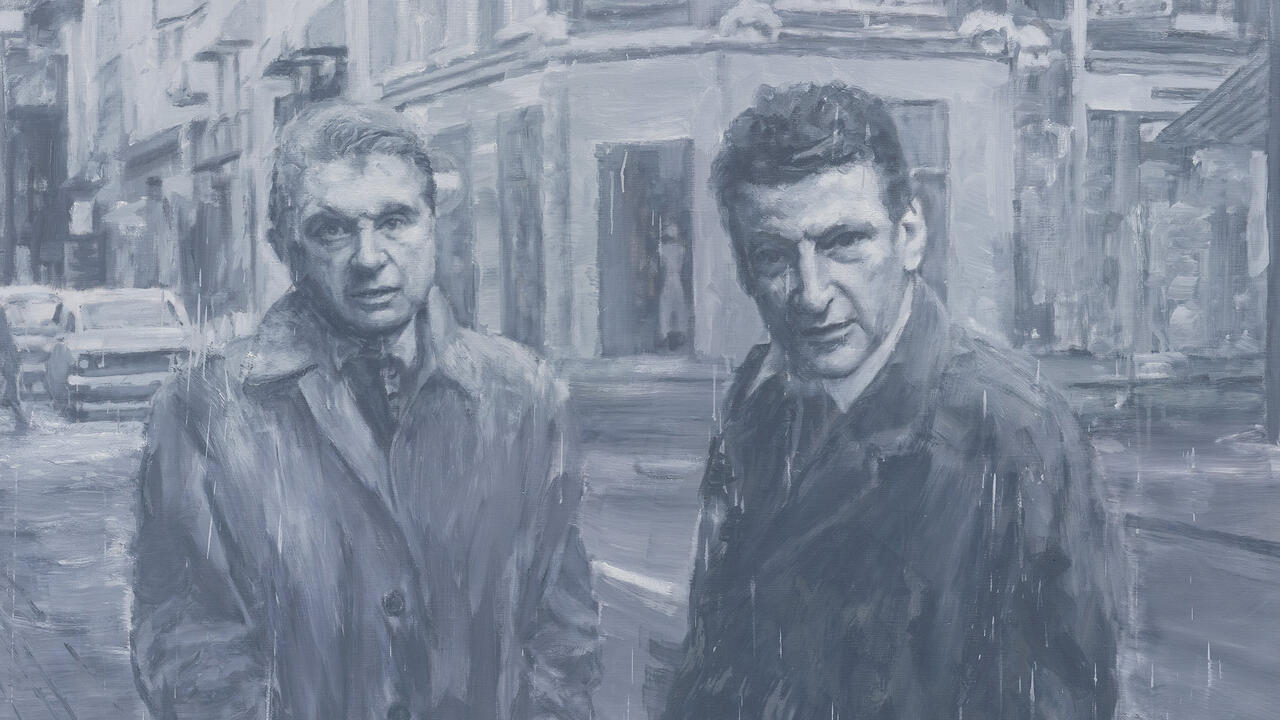Rachel Harrison
Whitechapel Gallery, London, UK
Whitechapel Gallery, London, UK

To judge from the 18 miniaturized images in Contact Sheet (1996), Rachel Harrison once took nine photographs of a cluster of bulging bin-liners sitting on a London street. Then she did some other, ostensibly palliative stuff – or so consecutive single frames of a passing landscape, the vaulted guts of a gothic church and a busy museum interior would suggest – but eventually returned to the street and took six more pictures. There’s some discernible sleight involved here, since on close inspection the Kodak filmstrips are of varying speeds. What looks casual is a montage, a construct. In form and content, this might be a microcosm of Harrison’s art and its captivations: 15 parts debris to three parts compromised uplift, slyly staged.
You’d be forgiven for expecting the littered street to be an American one. Since making that early photographic work, which was hung near the opening of ‘Conquest of the Useless’, her 13-work show at Whitechapel Gallery, Harrison has been quite the national artist. Like a less sour, more accepting Cady Noland, she has apparently charged herself with describing twilight in America, rehearsing a culturally specific intertwining of abundance and blankness and an endless mystical capacity to convert too much into not enough. The exhibition’s centrepiece, Indigenous Parts V (2010), exemplified the dominant ambiance. The fifth rendering so far of an unstable, mutating work, it was an obliquely angled cordon assembled from all the plinths and shelving elements that the Whitechapel could borrow from other galleries in London, the elements showcased upon them adding up to a dainty melée of time-expired cultural overspill.
On one upraised video monitor, tireless worker ants burrow; on another, an auction is in progress – it’s of fire-sale quality, materialist culture’s sharp end. In the auction room is a TV playing an NFL game and the auctioneer is offering, among other temptations, an amateur charcoal drawing of The Beatles, signed by its maker. Other plinths hoist up the box for a model Chevy Impala at 1:25 scale, old pictures of Cher and Mel Gibson and Ronald Reagan, and – a seeming nod to Nam Jun Paik’s TV Buddha (1974) – a battered Buddha with a plastic brioche on its head, a twig resting on top of that. Contemplative space amid the consumerist fray looks embattled. So does oracular high art, nodded to in Indigenous Parts V by boutique versions of Harrison’s signature lumpy-Modernist sculptures: teetering pile-ups of geometric forms that look to have been dipped in thick tar, then painted in sunny colours.
Amid the numerous larger freestanding sculptures elsewhere, Haycation (2009) gets all of Harrison’s impulses working for her. Two bales of hay support a pleasurably ugly polychrome plinth which, in turn, elevates an indistinct sculpted ‘figure’, an upright lump draped in a knitted shawl and an orange safety vest with a silver lobster tucked into its pocket, the box for a mosquito head net serving as a facial proxy. Ironical sociological thrust aside – the work addresses a US fad for ‘holidays on the farm’ undertaken with proper protection from nature – this knowingly degraded take on the Rauschenberg-style painted assemblage has only just enough vitality to articulate its analysis, and only does so because of where it is. In offering such a knowingly weakened aesthetic form, Harrison makes apparent how much work the white cube is doing to prop it up. Art, like capitalism – the subject, of course, that expands her purview out beyond her own continent – is underlined as just another system of rigged appearances.
For all the fine pitching of such a work, however, this reading might hint that Harrison isn’t so much dynamiting new conceptual ground as finessing the known, and in her Whitechapel show this was frequently the case. Against that, what’s cherishable in Harrison’s work is how the widescreen scope of her disquiet – seen through these sardonic eyes, virtually everything is fucked – is given wings by broad black comedy: the degraded icon that is Johnny Depp (2007), for example, a towering cubist lurch of geometries rising from a circular side-table, the unwieldy commemorative whole unified by purple and gold paint and accessorized with a silly piratical earring.
What’s subtler, and more pervasive in that it’s felt in the gut, is that this is far from the first time I’ve visited a Harrison show and sensed that, on some obscure level, something fundamental was missing – that some animating element has been refused or withdrawn. It feels superficially wrong but also – if this is art as cracked mirror, magnetized to bagged trash – more deeply right. ‘Keep the customer satisfied’ is a mercenary fiction, in fact a toxic one, concealing its inverse. Why not dispense with the promise and move straight to the aftermath?
























